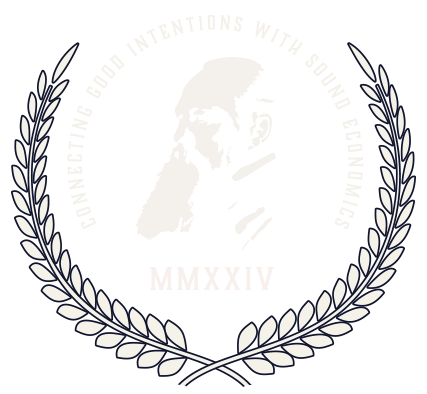A common experience for American conservatives is to hear a progressive call their policy positions “fascist.” Usually the connection between said policy and fascism is, at best, tenuous: “Oh, you support school choice? You know who else went to school? Fascists.”
The word fascist is thrown around carelessly by those on the left, such that it barely means anything anymore. Nevertheless, there was a historical fascism whose rhetoric is echoing among many in the New Right. Is there reason for concern?
However, in the past few years American conservatives have noticed that some among them have drifted into opinions that seem “right-wing” yet not traditionally conservative. Since the New Conservative Movement began in the 1960s, and especially since the election of Ronald Reagan to the presidency in 1980, conservatives have traditionally adhered to a consensus of four principles: free markets, anti-totalitarianism, religious values, and limited government. The consensus was robust enough to entertain disagreements over which of the four to prioritize without abandoning any of the principles—until recently.
Starting with the emergence of the “Alt-Right” during the 2010s, a different group of political right-wing ideologues have surfaced to defend very different principles from those of traditional American conservatism. Rather, they are much more closely aligned with European conservatism: economic protectionism, foreign noninterventionism, and an aggressive use of government power. The only shared principle is that of religious values, but there are some caveats here. The religious among them profess little hesitance to use the state to coerce citizens on matters of faith, and the irreligious among them are happy to use religion to political ends. The factions embracing these alternative right-wing principles include Catholic integralists like Adrian Vermeule and Gladden Pappin, economic nationalists like Oren Cass and Julius Krein, masculine vitalists like Costin Vlad Alamariu (better known by his Twitter handle, “Bronze Age Pervert”), and members of the Claremont Institute like Michael Anton and John C. Eastman. The disparate conservative factions do not embrace all four European conservative ideas to the same degree or with the same priority, but they are willing to cooperate to establish an alternative to traditional American conservatism.

The funny thing about the New Right is that it seems very old. Those familiar with the history of European conservatism might worry when looking at this “new,” alternative right-wing ideology. Economic protectionism, defense of totalitarianism, aggressive use of government power, and religious values formed the basis for the 19th-century reactionary politics against the French Revolution and the future foundation for 20th-century fascism. Indeed, one would not be wrong to make this association, as many in this group, such as Vermeule and Pappin, are happy to make such associations themselves. Others, however, might favor policy positions that fascists once promoted but are not themselves fascists and even dislike fascism. Such a distinction might strike the reader as silly, but it is quite simple. One does not need to be a fascist to favor industrial policy; otherwise, Alexander Hamilton would have been goose-stepping his way into meetings with George Washington. Most of the others mentioned above fall into this category, especially Cass and Anton. As for Alamariu, much of this is just an ironic diversion.
Yet many American conservatives as well as those on the left nevertheless regard the emergence of this alternative as the second coming of fascism. For example, in his 2022 autumn essay, “We Need to Stop Calling Ourselves Conservatives,” John Daniel Davidson offered this common argument on the New Right: “The left will only stop when conservatives stop them, which means conservatives will have to discard outdated and irrelevant notions about ‘small government.’ The government will have to become, in the hands of conservatives, an instrument of renewal in American life—and in some cases, a blunt instrument indeed.” In reply, neo-conservative godfather Bill Kristol agreed that Davidson and his ilk should stop calling themselves conservatives and suggested on Twitter an alternate headline to Davidson’s essay: “We Need To Start Calling Ourselves Fascists.”
Such a comment seems like what one has come to expect from online discourse—an overheated article promoting one’s preferred ideological solution and an equally overheated social media response designed to maximize impact and engagement. But what of the substance of the accusation? How “fascist” is the New Right or the factions in its orbit?

The Unique Vintage of American Fascism
The short answer is that they are not fascist at all. Fascism was a European ideology that emerged in response to the rise of communism and the trauma of the First World War. Arguably, the earliest fascist party was the Action Française(1899–1926), with its leader Charles Maurras celebrating French religious and military tradition in his appeal to the French bourgeoisie disillusioned with continental liberal institutions like parliamentary government and the franchise. Maurras began the party during the Dreyfus Affair but experienced the greatest success in the years following the First World War. The first successful fully fascist parties were the eponymous Fascist Party of Benito Mussolini of Italy, the Nazi Party of Adolf Hitler in Germany, the Falangist Party of Francisco Franco’s Spain, and the Fatherland Front of Austria’s Engelbert Dollfuss. Whatever political struggles America experienced during the same time, the political parties did not divide between national and international socialist parties this way. After all, Eugene V. Debs, the leader of the Socialist Party of America, posed no real threat to the American republic, and what fascist opposition there was to communism in America was to a great degree conspiracy-theorizing, or part of what Richard Hofstadter called “the paranoid style” in American politics.
For fascists, the cause of political decline was liberalism.
The longer answer is that the traits the New Right does share with fascism stem from the borrowing of older American fascist appeals but reinterpreting them in ways that once served fascist interests in Europe. American fascism was intentionally different from its militant European varieties. A specific definition of fascism is notoriously difficult to provide, since, as noted above, the term has been subject to so much abuse. Robert O. Paxton has offered, nevertheless, an excellent one in his book The Anatomy of Fascism, adopted for this essay:
Fascism may be defined as a form of political behavior marked by obsessive preoccupations with community decline, humiliation, or victimhood and by compensatory cults of unity, energy, and purity, in which a mass-based party of committed nationalist militants, working in uneasy but effective collaboration with traditional elites, abandons democratic liberties and pursues with redemptive violence and without ethical or legal restraints goals of internal cleansing and external expansion.

For fascists, the cause of political decline was liberalism. As Paxton says, “One of the most important preconditions was a faltering liberal order. Fascisms grew from back rooms to the public arena most easily where the existing government functioned badly, or not at all. One of the commonplaces of discussions of fascism is that it thrived upon the crisis of liberalism.” After the end of the First World War in 1918, European countries returned to liberal, democratic governance but lacked the public trust and internal cohesion to practice it well; hence, as Paxton explains, fascists could easily persuade more conservative elements of the populations to use liberal democratic methods, namely elections, to vote themselves out of liberal democracy. As Benito Mussolini, the founder of the Fascist Party in Italy, said in 1933:
One should not exaggerate the importance of Liberalism in the last century and make of it a religion of humanity for all present and future times when in reality it was only one of the many doctrines of that century. … Now Liberalism is on the point of closing the doors of its deserted temple. …That is why all the political experiments of the contemporary world are anti-Liberal and the desire to exile them from history is supremely ridiculous: as if history was a hunting preserve for Liberalism and professors, as if Liberalism was the last and incomparable word in civilization. …The present century is the century of authority, a century of the Right, a Fascist century.
In places like Italy, Spain, Austria, and Germany, fascism was a nationalist adoption of socialist programs to defend against the internationalist, communist parties seeking a worker revolution, hence “national socialist.” Fascists were nationalists in that they extolled the nation as the bulwark against communist subversion, and the threat of communists—often real, but sometimes not—provided the basis for popular support, in addition to conspiracy theories that connected communism to the Freemasons and Jews. Foreign interlopers, so the theories went, did not share the fundamental qualities of the native born and their homeland, and they sought to deny the rightful heirs to the soil their pride of place.
The fascists were not quite socialist enough to nationalize all industry; instead, they adopted an economic model called “corporatism.”
The fascists were not quite socialist enough to nationalize all industry; instead, they adopted an economic model called “corporatism,” in which the government was a primary stakeholder in large, somewhat private corporations. The governments would regulate what was to be made, how much to pay workers, and on what matters to conduct research, but they left the question of means to the executives and managers. Fascist parties in Europe appealed to common national struggles, religions, histories, and most infamously “racial purity” as the real basis for solidarity, one that pitted nations against each other rather than the international proletarian struggle against the capitalists. To that end, fascists praised technological advancement, managerial control over the economy, and a reclaimed masculinity in overt militarization. Caught in the middle were various liberal and conservative parties that lurched toward one extreme or another while unable to control fascist violence. The result: Fascist squadristi attacks on socialists in Italy; a total civil war in Spain; the suspension of the constitution and formation of a one-party clerico-fascist state (and eventually assassination) in Austria; and the Reichstag fire, Kristallnacht, and all the inhumanities of the Nazi regime in Germany.
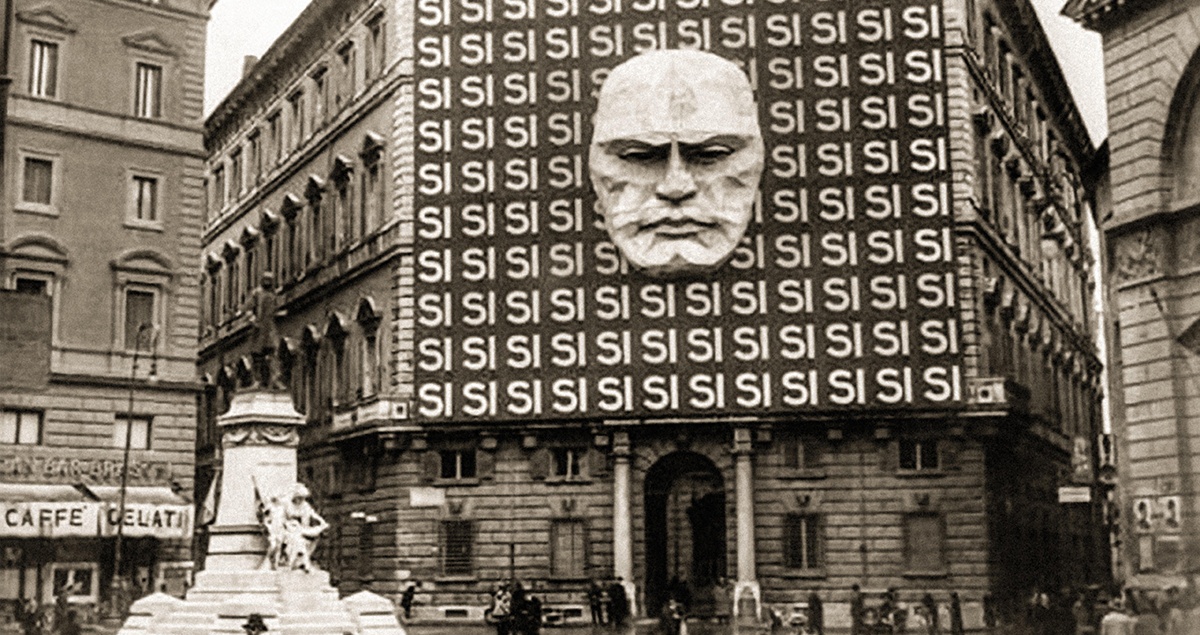
The American experience with fascism was different because it was not a domestic product but a European import. American fascism is a product of the fascist propaganda of the 1930s and ’40s, its messages crafted to keep Americans out of war and friendly to fascist leaders because of their anticommunism, efficiency, and modernity. In the years leading up the Second World War, the Axis Powers sought to charm Americans with messages of anticommunism, efficiency, and modernity. Once the war started, though, fascist propagandists spread messages against American military intervention. Therefore, most unlike the deeply militaristic propaganda in fascist European nations, American propaganda was quite anti-militaristic. The Axis Powers understood that President Franklin D. Roosevelt harbored strong sympathies for the Allied Powers, as did many Americans, and fascists hoped to discourage American militarism, since it would likely be in defense of Great Britain and France.
The American experience with fascism was different because it was not a domestic product but a European import.
American fascists like William Dudley Pelley and his Silver Legion of America (or “the silver shirts”), though small in number, endorsed fascism directly and opposed American intervention on the side of the Allies, as did the much more popular Fr. Charles Coughlin, a Canadian-born Catholic radio priest based out of Detroit, publisher of the magazine Social Justice, and leader of the antisemitic and fascist party the Christian Front, which had been infiltrated by Nazi agents. Fascist sympathizers like Charles Lindbergh promoted anti-interventionism as part of his “America First” appeal, which garnered significant support. All three identified American intervention on the side of the Allies as a Jewish plot and therefore built into their defense of fascism a conspiracy theory of European origins for an American audience.
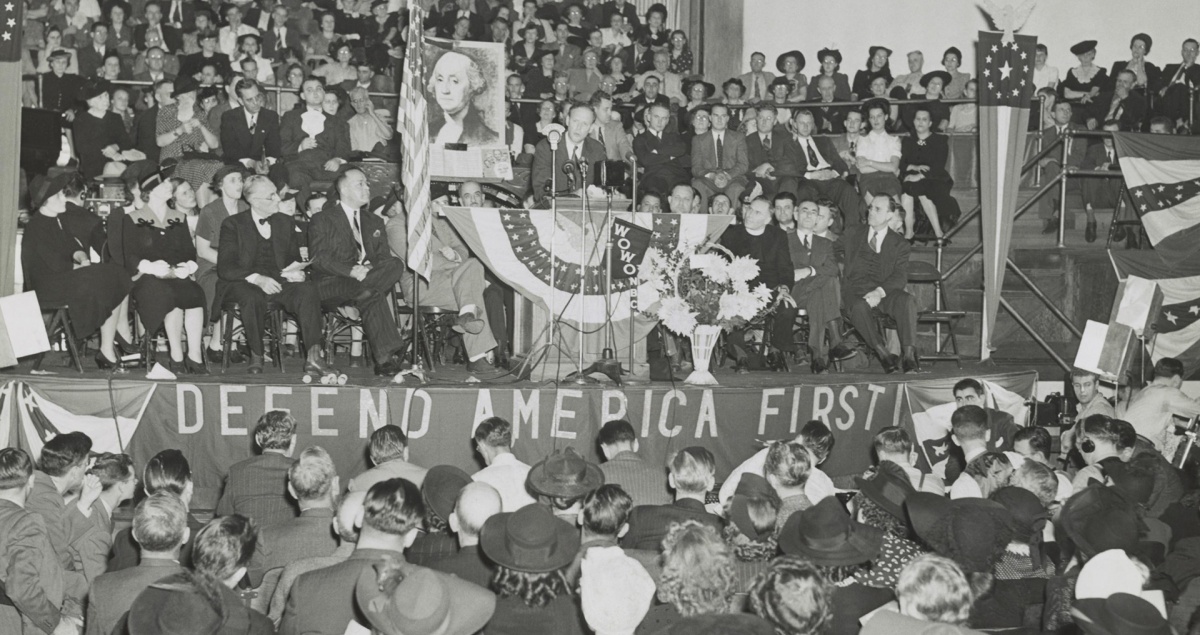
Americans more generally had some positive opinions of fascist states during their early years. Many American Catholics were hopeful that Mussolini would improve the conditions for the Vatican after he signed the 1929 Lateran Treaty, in which the Italian government recognized papal sovereignty over the Vatican and the Vatican recognized the Italian government. Mussolini, the stronger of the two partners in raw force, flouted the terms of the treaty in the following years, thereby dashing these early hopes. Even as late as 1936, however, Mussolini was liked well enough that former presidential candidate and New York governor Al Smith visited him while mulling a primary challenge against Franklin D. Roosevelt.
During the Spanish Civil War, the Republicans (those aligned with the Soviet Union) massacred Catholic clergy and religious, earning much American sympathy with Franco’s Nationalists, leading to a sectarian fight at home over whether America should stay neutral in the war (supported by American Catholic leaders) or support the Republicans (supported by American Protestant leaders). Franco prevailed, and the result was a formally neutral but functionally Axis-aligned state. During the Second World War, Spain was in no shape to participate, but Franco directly aided the Third Reich, sent volunteers to fight for it, and provided material assistance to Axis industry. All the while he hoped to use his support to leverage territorial gains away from Vichy France, that is until the Axis began to lose. At that point, Franco hoped to put an Allied spin on his behavior with propaganda successful enough to be repeated today as “common knowledge.”
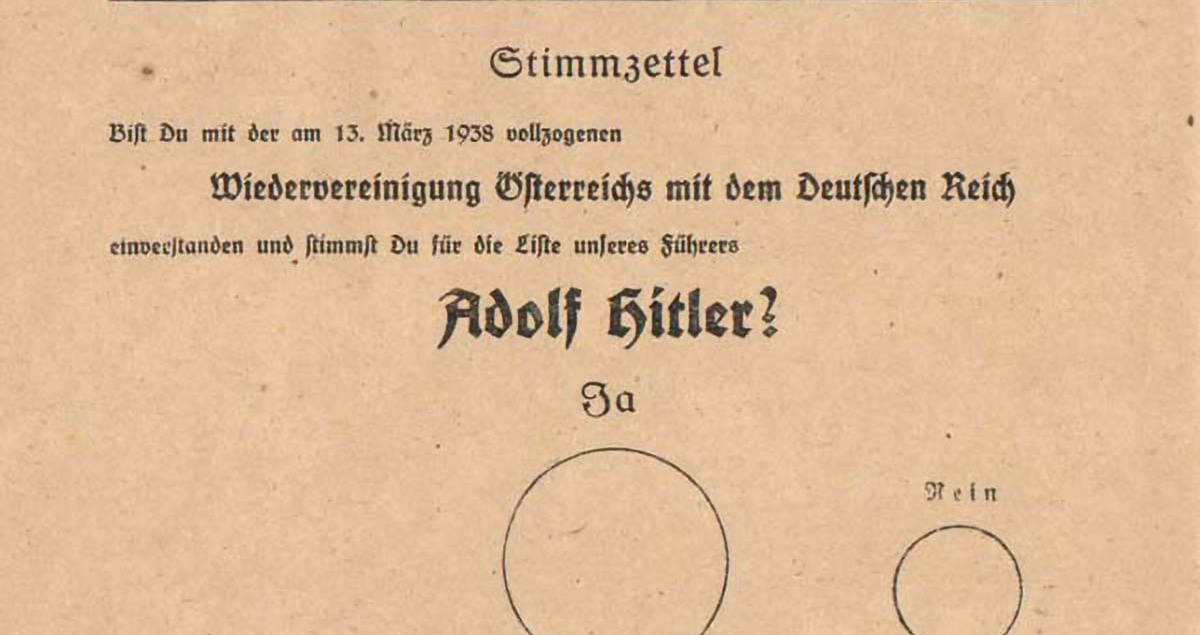
As for Austria, Americans often remain ignorant of Dollfuss except as the man Hitler had assassinated to usher in the 1938 Austrian Anschluss, although a subset of American Catholics may still regard him as the “good fascist” because he presented himself as a good Catholic who hoped to subject Austrians to an authoritarian state informed by Pope Leo XIII’s 1891 encyclical Rerum Novarum. The truth is that Dollfuss was weak, as his position in Austria depended on an alliance with Mussolini and the Rome Protocols of 1934 against Hitler. Even so, Dollfuss composed a one-party state in which an anti-Nazi fascist party, the Heimwehr, joined with the Christian Social Party and the Fatherland Front Party to form the base of Dollfuss’ power as he attempted to liquidate various socialist parties within his borders. Hitler had Dollfuss assassinated in 1934, clearing the way for a reproachment with Mussolini at the 1936 Rome-Berlin Axis coalition and the 1939 Pact of Steel.
Some Americans even admired Hitler. Coughlin’s Christian Front and Lindbergh’s America First could make strong ethnic appeals not merely to German Americans but also to Irish Catholics who remembered Roger Casement’s securing Germany’s willingness in 1914 to ship munitions to support an Irish Brigade (which the British would later intercept) and a statement of German support for an independent Ireland from Arthur Zimmermann. For this reason alone, many German and Irish ethnic Americans were at least open to Hitler’s being an improvement over the Weimar Republic. Not to be outdone were the old WASP guard of the Ivy League. Ernst “Putzi” F.S. Hanfstaengl, Harvard class of 1909, attended a class reunion in 1934 at first with an invitation to serve as vice marshal, an invitation rescinded after a backlash, yet Hanfstaengl showed up all the same despite a substantial protest from Cambridge locals. At the time, Hanfstaengl oversaw the Nazi foreign press office and was a personal friend of Hitler’s. Rather infamously, Joseph P. Kennedy, FDR’s ambassador to the U.K. and a friend of Coughlin’s, was a highly placed American defender of Hitler’s as late as 1939. As John D. Wilsey notes in his recent spiritual biography of John Foster Dulles, even Dulles sought to soft-pedal opposition to Hitler on behalf of the American financial interests that his law firm represented. While working in the Dulles archives at Princeton, Wilsey even uncovered a photograph of the two men together smiling at a meeting in 1933. Dulles eventually came to his senses by 1939—quite late.
Americans more generally had some positive opinions of fascist states during their early years.
Of the four fascist leaders, only Franco survived the Second World War, and he did his best to refashion his regime as pro-Allies as possible by stressing his anticommunism. He had very good reason to suspect that the victorious Allies wanted him replaced, although that effort was eventually scrapped as the rapidly worsening situation with the Soviet Union took priority. Leaving Franco where he was, the Allies agreed, was the least bad option. In his Franco: Anatomy of a Dictator, Enrique Moradiellos describes how Franco would spend the rest of his long life slowly unraveling his fascist state into a weakly authoritarian one while seeking western support by stressing his anticommunism. He liberalized the economy once autarky had badly impoverished the nation, and increasingly left day-to-day national affairs to underlings as he became increasingly engrossed in soccer matches. That Spain enforced a public Catholicism led some American Catholics to believe it was a real alternative to an anti-Catholic “liberal” America. Among these were L. Brent Bozell Jr. and his wife, who moved there in 1965 just prior to starting the traditionalist Catholic magazine Triumph. That they lived there during the final years of Franco’s rule makes their admiration all the more surprising, as most of the Spanish were more than fed up with “el Caudillo por la Gracia de Dios” by then. Of course, during the decade of Bozell’s time there, Franco had long ago stopped murdering Basque priests, executing his enemies, and forcibly shutting down Masonic lodges because of his suspicion that they collaborated with the Jews. By then he was just … an old man.

The New Right Is Not Fascist—Yet
Therefore, returning to the original question regarding the New Right—is it fascist?—the criteria presented by Paxton are, again:
- 1. Obsessive preoccupations with community decline, humiliation, or victimhood
- 2. Compensatory cult of unity, energy, and purity composed of mass-based party of committed nationalist militants
- 3. Uneasy but effective collaboration with the traditional elites
- 4. Abandonment of liberty to pursue redemptive violence without restraint for internal cleansing and external expansion
As it happens, the New Right overlaps with this definition of fascism most of all in the first and second categories, is attempting the third, but is only partially interested in the fourth.
Those among the New Right are certainly obsessed with community decline, humiliation, and victimhood. At the 2022 Restoring the Nation conference organized by Sohrab Ahmari at Franciscan University of Steubenville, the overriding theme was that Ohio’s economic desolation represented the logical conclusion of liberalism. During his talk at the conference, Patrick Deneen made great rhetorical use of the poverty he saw in the city and the surrounding areas. After describing Steubenville, Ohio, as a town that looked like it lost the Second World War, he illustrated his point by comparing photographs of busy streets from the mid-20th century to the abandoned storefronts of late 2022. He ridiculed the town to his audience: “As I was driving around Steubenville, and I hope that you have the chance to go to downtown Steubenville, you can just inhale, and smell, and taste the liberty.” Deneen, whether he knew it or not, was making the same appeal to the “deserted temple” of liberalism that Mussolini had made during the 1920s. Deneen, of course, does not cite Mussolini in his argument; his preferred authority on the subject is Christopher Lasch. The point is not that Deneen endorses Il Duce. He does not. Rather, Deneen’s rhetoric is quite similar in its obsession with blaming liberalism as the sole cause for what he perceives as American decline, and for the application of Paxton’s definition, that similarity is worrying enough.

Something similar can be found in the work of Michael Anton. Anton began this appeal in his 2016 “Flight 93 Election” essay for the Claremont Review of Books, originally under the pen name Publius Decius Mus. Anton breathlessly concluded in that essay, “If [the core of the American nation] cannot rouse themselves simply to vote for the first candidate in a generation who pledges to advance their interests, and to vote against the one who openly boasts that she will do the opposite … then they are doomed. They may not deserve the fate that will befall them, but they will suffer it regardless.” Again, the language is that of humiliation and decline.
The leader of the New Right most interested in a compensatory cult of unity, energy, and purity might be Yoram Hazony and those at the Edmund Burke Foundation. Hazony is a very unlikely source for fascist sympathy, being a Modern Orthodox Jew and Israeli. Nowhere does he argue for the formation of paramilitary groups like the Sturmabteilung (or the “brown shirts”) of the Nazi Party or Mussolini’s Milizia Volontaria per la Sicurezza Nazionale (or the “black shirts). While some might point to the Proud Boys or other right-wing paramilitary outfits on the right, their association with Hazony is nonexistent. Rather, for Hazony, the unity, energy, and purity of the nation is abstract and almost spiritual. He deflects accusations that fascists were nationalists by insisting they might have invoked the nation as a principle but were, in fact, imperialists. A good nationalist “will be on his guard against imperial projects, coercive international institutions, and theories of actionable universal rights” while also doing “what must be done to maintain and build up the material well-being of his own nation, its internal cohesiveness, and its unique cultural inheritance.” The trouble for Hazony is that his abstraction is just a generalization from the Israeli national experience, one that maps poorly on the broader history of nations. After all, the cultural inheritance of Germany was, for Hitler, in the Germans of Danzig. Nations historically have gone to war for territory, and if such wars disqualify nations as nations, then Hazony is left with the “nationalism” of Singapore, Switzerland, and Suriname.
One might find rhetoric for the cult of unity more closely capturing Paxton’s understanding of fascism in the work Glenn Ellmers, who despaired of American unity and purity when saying in a 2021 American Mind essay, “‘Conservatism’ Is No Longer Enough”:
Obviously, those foreigners who have bypassed the regular process for entering our country, and probably will never assimilate to our language and culture, are—politically as well as legally—aliens. I’m really referring to the many native-born people—some of whose families have been here since the Mayflower—who may technically be citizens of the United States but are no longer (if they ever were) Americans. They do not believe in, live by, or even like the principles, traditions, and ideals that until recently defined America as a nation and as a people. It is not obvious what we should call these citizen-aliens, these non-American Americans; but they are something else.

The imposition of high immigration and the abandonment of American values has lead to a moral crisis for Ellmers, who concludes, “It has been like this for a while—and the MAGA voters knew it, while most of the policy wonks and magazine scribblers did not … and still don’t. In almost every case, the political practices, institutions, and even rhetoric governing the United States have become hostile to both liberty and virtue. On top of that, the mainline churches, universities, popular culture, and the corporate world are rotten to the core.” Ellmer’s solution is for those formerly known as “conservatives” to ready their bodies for what he envisions to be a real civil war. Ellmers is not alone in this appeal to extraconstitutional means in the fight for a newly purified American way of life. Jesse Kelly pronounced on Twitter in May of 2023: “The American Right will have to decide whether it wants a big federal government doing unconstitutional things to stop blue states from turning into Gomorrah or just let them burn in their own depravity. Sadly, there isn’t a second choice.” Once again, the language concerning unity and purity drive the need for the use of energy regardless of its unconstitutionality. Given the events of January 6, this kind of language cannot be taken purely as bravado.
As for tentative alliances with elites, little needs to be said except to observe those who show interest in the New Right. The clearest elite allies of the New Right are Senators J.D. Vance and Josh Hawley and former Trump attorney general Jeff Sessions, with some interest from Senators Marco Rubio and Ted Cruz, as well as Governor Ron DeSantis. Donald J. Trump is oddly at a distance from the New Right despite being their champion.
Finally, the fourth category refers to appeals to internal purity and external expansion. The New Right stresses internal purity but rejects American expansion. As shown already, American fascists promoted American neutrality because fascist governments in Europe wanted to dissuade Americans from intervening in the Second World War against the Axis powers. Where do we see such a promotion of neutrality today? The answer is in the ongoing Russian invasion of Ukraine and the pro-neutrality, even pro-Russian sentiment in publications like Compact and The American Conservative. For Thomas Fazi at Compact, the Russian invasion of Ukraine was a rational response to NATO encirclement. For Bradley Devlin at The American Conservative, data from April 2023 intelligence “reveals who is really waging this war against Russia. Ukraine, which has been a money-laundering operation for the well-connected in the West for the last decade (see Hunter Biden), continues to be just that. Ukraine is the American liberal empire’s proxy in the truest sense.”
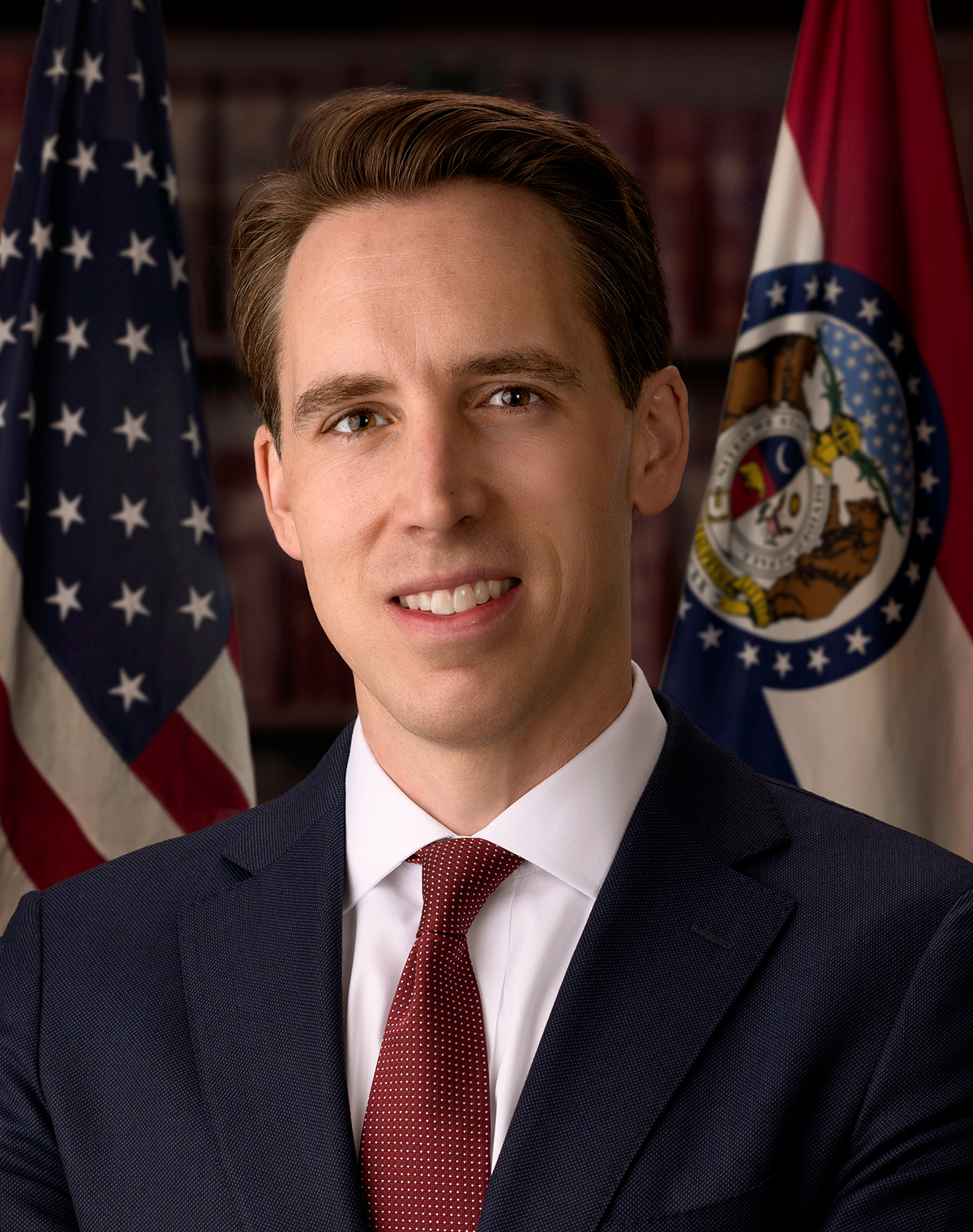
Even so, that these appeals to nonintervention resemble older American fascist appeals is not enough. American isolationism preexisted fascist propaganda, being that it was the default American foreign policy position during the entire 19th century. Indeed, that history is what the fascists hoped to exploit when making their original appeals. One could argue that America has never fully reconciled itself with replacing the British Empire as the world’s maritime hegemon, and those discomfited by our position in international affairs have included people from all ideological stripes, including for many years people on the left. After all, the communists made the same appeals to noninterventionism and neutrality during the Cold War. Where the issue really comes to a head is in the elevation of Aleksandr Dugin as a Russian intellectual worth consulting to gain perspective on the ongoing conflict, as Michael Millerman did in a short 2022 Compact article. As John Ganz pointed out in his Substack, Unpopular Front, Dugin has called himself a fascist.
With all the above considered, the answer to our question is that the New Right is not fascist but (1) has some important intellectual figures who borrow from proto-fascist, historical fascist, and contemporary fascist sources, (2) draws from the same historical American policy positions that fascists once did, and (3) shows no sign of a limiting principle for adopting more aggressively fascist positions. That said, the New Right is also a deeply factious movement, and its leader (to the extent that it has one), Yoram Hazony, regularly denounces fascist leaders in The Virtue of Nationalism. Also, one does not need to plan a Beer Hall putsch or wear colorful armbands to agree on discrete matters with fascist thinkers or to share a policy position that American fascists took decades ago. What is genuinely worrisome is that there is no limiting principle and the implicit demand that there be “no enemies to the right,” as well as an insistence that there is an ongoing state of emergency requiring extraconstitutional or even anti-constitutional measures and that economic ruin is reversable only through a dramatic imposition of government power. Therefore, the New Right is not fascist, but there is no reason for it not to be except for the ongoing sobriety of its leadership. That is reason enough to worry.




